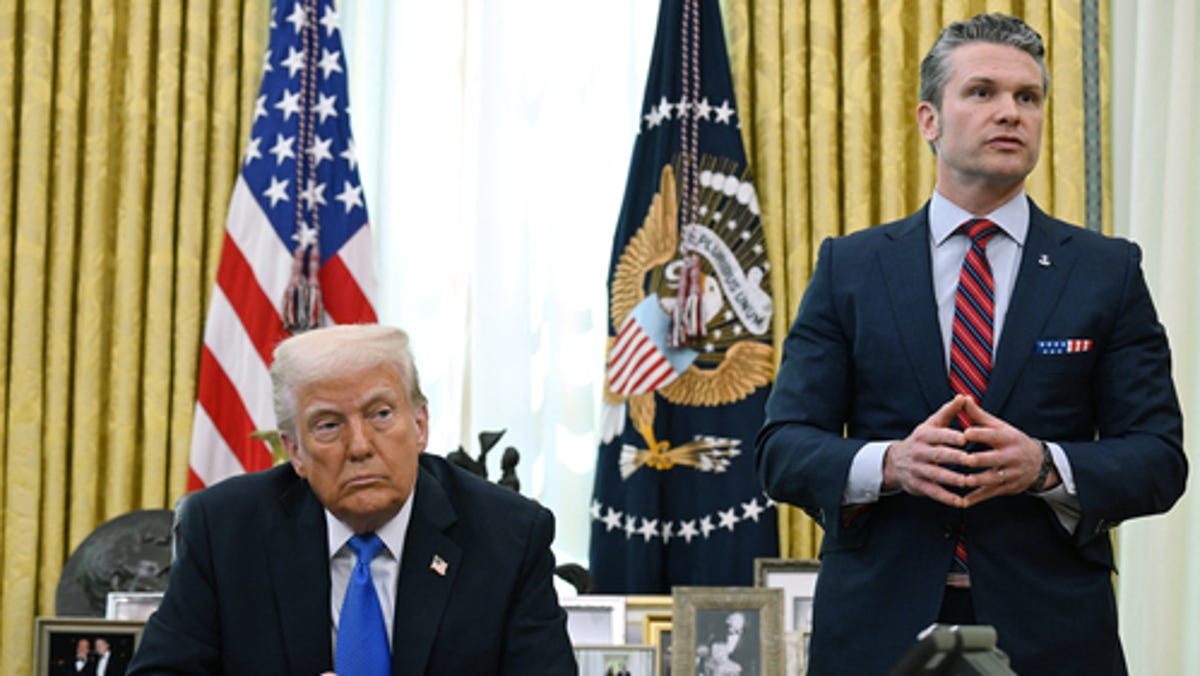Defense Secretary Pete Hegseth denies texting war plans
U.S. Secretary of Defense Pete Hegseth denies texting war plans to a journalist from The Atlantic.
WASHINGTON ― The Atlantic reporter at the center of the Trump administration’s Signal chat fiasco on Wednesday published U.S. military attack plans that Defense Secretary Pete Hegseth and the White House denied had been shared in the commercial app chat that included the journalist.
The Atlantic’s editor-in-chief, Jeffrey Goldberg, detailed in his story what Hegseth told the the Houthi PC Small Group on March 15 as the U.S. conducted airstrikes on Iran-backed Houthi sites.
Goldberg wrote that he had previously withheld publicizing Hegseth’s texts out of concern for the sensitive nature of the information. But Trump’s White House on Tuesday continued to dispute his initial report about “war plans” being discussed in the chat.
According to a story published by Goldberg on Wednesday morning, Hegseth at 11:44 a.m. on March 15 ‒ about 30 minutes before the first airstrikes ‒ sent an update to the group that read: “TIME NOW (1144et): Weather is FAVORABLE. Just CONFIRMED w/CENTCOM we are a GO for mission launch.”
Hegseth then detailed the timeline for the airstrikes in texts:
“1215et: F-18s LAUNCH (1st strike package)”
“1345: ‘Trigger Based’ F-18 1st Strike Window Starts (Target Terrorist is @ his Known Location so SHOULD BE ON TIME – also, Strike Drones Launch (MQ-9s)”
Hegseth later wrote:
“1410: More F-18s LAUNCH (2nd strike package)”“1415: Strike Drones on Target (THIS IS WHEN THE FIRST BOMBS WILL DEFINITELY DROP, pending earlier ‘Trigger Based’ targets)”“1536 F-18 2nd Strike Starts – also, first sea-based Tomahawks launched.”“MORE TO FOLLOW (per timeline)”“We are currently clean on OPSEC”—that is, operational security.“Godspeed to our Warriors.”
Trump’s national security adviser Mike Waltz then provided updates on real-time conditions of the target sites, according to The Atlantic.
“VP. Building collapsed. Had multiple positive ID. Pete, Kurilla, the IC, amazing job,” Waltz wrote, referring to Hegseth; General Michael E. Kurilla, the commander of Central Command; and the intelligence community, or IC.
Trump and his administration have scrambled to minimize the fallout after the Signal chat fiasco by downplaying the gravity of the breach, touting the success of the military operation and lashing out at the reporter.
Yet Goldberg’s account raised new questions about why Trump’s national security team would use a commercial phone app to discuss sensitive plans to conduct airstrikes on Iran-backed Houthi sites in Yemen.
And it exposed sheer recklessness for Waltz to inadvertently invite a journalist into a chat group that included 18 top administration officials including Vice President JD Vance, Secretary of State Marco Rubio and Hegseth.
Reach Joey Garrison on X @joeygarrison.
